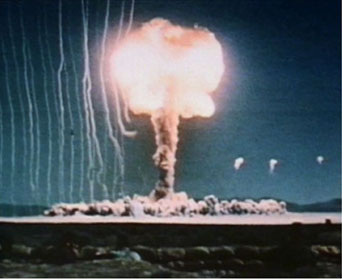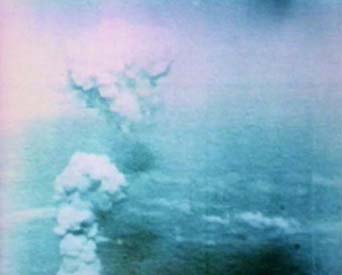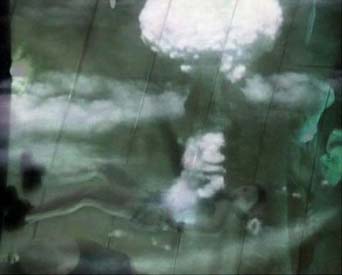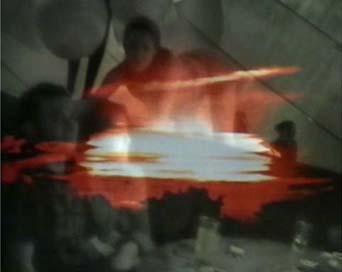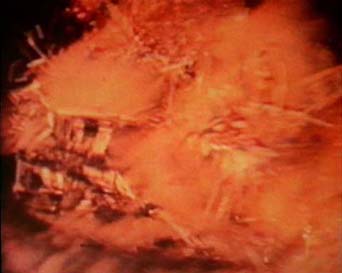IMAGES: Stefano Cagol, Atomicwerk, Video Frames, 2005
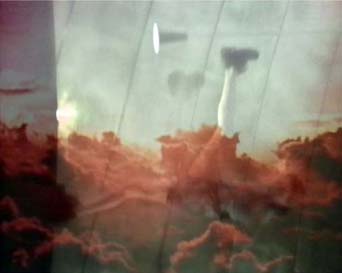
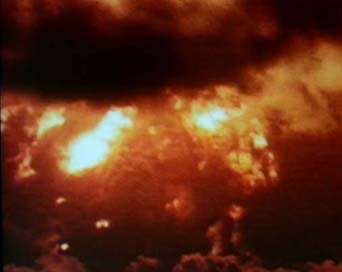
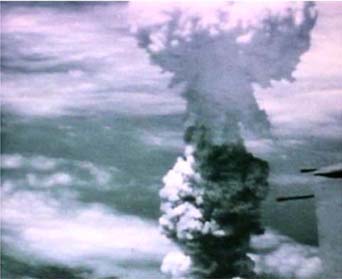
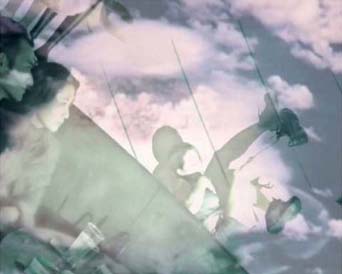
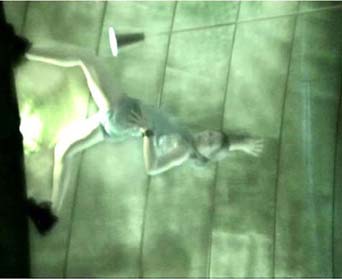
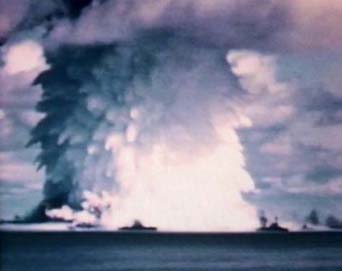
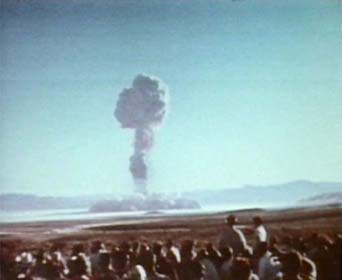
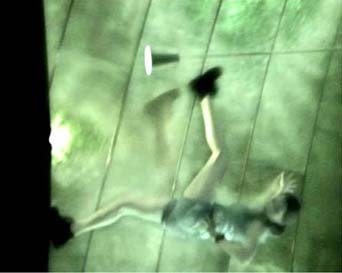
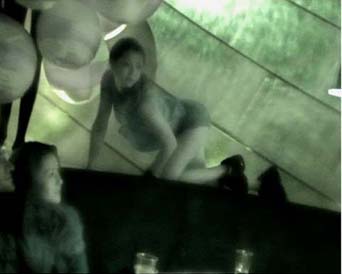
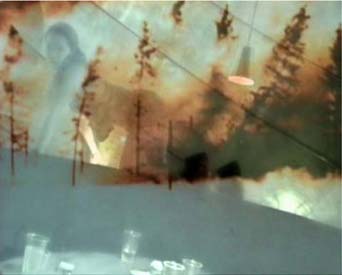
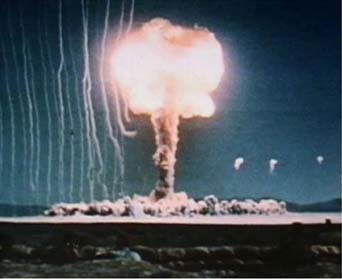
stefano cagol Home
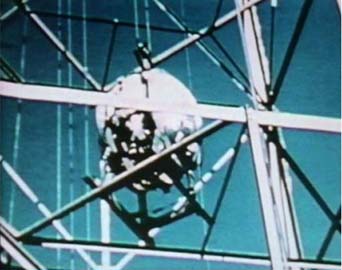
STRINO FORTRESS,
VERMIGLIO
Stefano Cagol: ATOMICWERK
Solo Show
July 24 - September 18, 2005
ESSAY BY OMBRETTA AGRO' ANDRUFFCatalogue Pdf
<>
(Italiano
sotto)
A game of contrasts and of de-locations has brought a relationship in-between the Strino Fortress in the Italian Alps, and a project taking place in these days in New York, "Atomica.: Making the Invisible Visible" at the Lombard Freid Fine Arts and Esso Gallery, curated by Ombretta Agrò Andruff.
These contemporary urgencies are coming to surface at an Austrian fortress dated late '800 close to the Tonale Pass at 1534 meters of altitude, a place where the war was lived, at a place charged with high intensity. Since art has always had a subversive responsibility towards society, his aim has been to oppose rules, the unsolvable trend of events that have followed one another from yesterday until today.
The
contemporary artist Stefano Cagol, in a place so dense with memories,
symbolically reflects on the idea of conflict, of friction, typical of
our present. By highlighting, arguing, denouncing, exposing without a
comment, or evoking metaphorically between past and present, West and
Japan, an actual Japan and a bombed Japan:
the only
nation to be hit by the atom bomb.
The new
video was born from images made in Japan, a girl dancing in Shibuya,
together with documentary images on atomic experiments. The soundtrack
is taken from the first video by Cagol dedicated to the atomic theme,
made in 1995 and presented in '96 at the highly selective Video Forum
of ArtBasel, re-mixed with contemporary Japanese sounds.
To the video
installation a series of images printed on stone, as miniatures, are
added, like immortal epigraphs dislocated at the gun pits thus crossing
spatiality and temporality.
The contemporary artworks by Stefano Cagol invade pacifically and symbolically the Austrian fortress that overlooks the glaciers of the Adamello Mountain right at the entrance of the Tonale Pass; they amplify and actualize the atmosphere charged with history that pervades the ancient and mighty stone walls. The actual expressive means used by the artist - like photography, video, installation - are set in narrow contact with an environment characterized by a very strong and austere identity. They interact through this specific exhibiting situation with an intentionally thoughtful development. The artworks interact with spaces, with stones, with the surrounding environment by giving birth to a site-specific, thus environmental project that intervenes on the entire surface of the fortress. By transforming the military fortress, originally called Werk in German, into a stronghold suspended between different cultures, opposed ideologies, different historical moments, but constant conflicts.
The expressive mechanism triggered by Cagol to involve the wide audience of the fortress into rethinking within this new dimension suspended between historicity and our contemporary times, moves continuously from an aseptic surrender deprived of comments, to a lexicon more symbolically iconographical. The images of multiple contemporary urgencies, be then daily or distant, are printed on the rock which brings back to the hardness of the walls of the fortress and are later on opposed to the old documenting pictures of the fortress, as to shots of atomic experiments, thus widening our thinking up to a universal point of view that goes beyond spatial and temporary borders. This approach meant to seize the idea by itself of a conflict, is repeated and distilled by the video installation. The artist detects a symbol of isolation, of the impossibility of approaching the Other, of the incapacity of communicating. The atomic bomb is taken as an extreme symbol that makes yesterday common to today, through the graft of daily images of Japan with the ones of a Japan that has gone through the tragedy of the atomic. That is how an atavistic contrast between human beings is evoked, indispensable condition for our survival on Earth. Even if man has gone over all thresholds, and reached the paradox of the conflict able to cancel life on the Planet.
We cannot but surrender. Three White Flags take the place of national emblems outside the fortress on the valley, a flag that Cagol has waved and will wave in other places of the art, and in this case meaningfully, where the war took place.
Ombretta Agrò Andruff is an independent curator of contemporary art. Born in Turin, she has lived in New York since 1998. For years she has been interested in the theme of the atomic bomb together with the artwork of international artists. Ombretta Agrò Andruff has organized solo and group shows in Europe and in the United States. In 2001 she was invited by the Whitney Museum of American Art to hold a conference on her curatorial activity. Since then she has held meetings and lectures at the School of Visual Arts, Engine 27, the Pratt Institute and the New York University. In September 2005 she has been invited to take part in the symposium titled After Hiroshima in London where she will introduce her project ATOMICA: Making the Invisible Visible.
>>>>>>>
Sono
urgenze contemporanee che vengono a galla in un forte austriaco di fine
Ottocento sull'Adamello a 1534 metri d'altitudine, in un luogo dove la
guerra è stata vissuta, dove è stato versato il sangue,
in un luogo carico di una forte intensità. Perché l'arte
ha da sempre una responsabilità sovversiva nei confronti della
società, una funzione di opporsi alle regole, all'andamento
irrisolvibile degli eventi che si susseguono da ieri ad oggi.
L'artista
contemporaneo Stefano Cagol, in un luogo tanto denso di memoria,
riflette simbolicamente sull'idea di conflitto, sul concetto di
scontro, di frizione che è proprio del momento attuale. Mettendo
in evidenza, ponendo in discussione, denunciando, esponendo senza
commento o evocando metaforicamente.
Il meccanismo espressivo innescato da Cagol per coinvolgere nella riflessione il pubblico ampio del forte in questa inedita dimensione sospesa tra storicità e contemporaneità si muove continuamente da una resa asettica, senza commenti, ad un lessico più simbolicamente iconografico. Attraverso la riproposizione artistica le immagini di molteplici urgenze contemporanee, quotidiane o lontane e mediatiche, sono avvicinate alle vecchie foto documentative del forte, ampliando la riflessione ad un punto di vista universale, che supera confini spaziali e temporali. Questo approccio che si rivolge all'idea in se stessa di conflitto viene ripetuto e distillato nell'intervento installativo. L'artista attraverso esso individua un simbolo dell'isolamento, dell'inavvicinabilità dell'Altro, dell'incapacità di comunicare. In questo modo evoca l'atavicità del contrasto tra gli esseri viventi, come condizione imprescindibile della sopravvivenza sulla Terra. Anche se l'uomo ha superato ogni soglia, arrivando al paradosso del conflitto capace di cancellare la vita sul Pianeta.
Non resta che la resa. Una Bandiera Bianca, una bandiera non alzata per proclamare una vittoria o il prevalere di un'identità nazionale, ma che Cagol ha sventolato e sventolerà in luoghi dell'arte e ora porta per la prima volta in un luogo insanguinato. Una Bandiera bianca, silenziosa, in segno di resa, di ammutolimento dell'arte di fronte a tanta incomprensione.
Ombretta Agrò Andruff è curatrice indipendente d'arte contemporanea, nata a Torino, vive a New York dal 1998. Da anni sta portando avanti una ricerca sul tema della bomba atomica affrontando il lavoro di artisti internazionali. Ombretta Agró Andruff ha organizzato mostre personali e collettive in Europa e negli Stati Uniti. Nel 2001 é stata invitata dal Whitney Museum of American Art a tenere una conferenza sulla sua attivitá curatoriale. Da allora ha tenuto conferenze e lectures presso la School of Visual Arts, Engine 27, il Pratt Institute e la New York University. Nel settembre del 2005 é stata invitata a partecipare ad un simposio intitolato After Hiroshima a Londra nel quale presenterá il progetto ATOMICA: Making the Invisible Visible.



